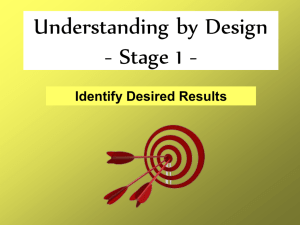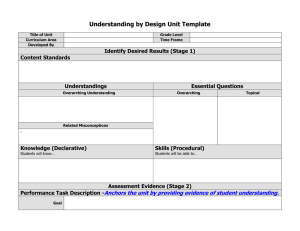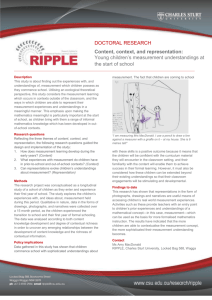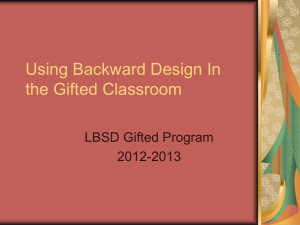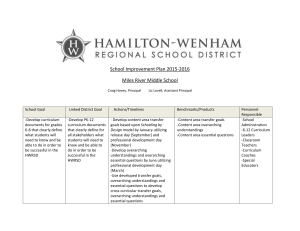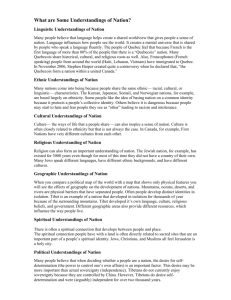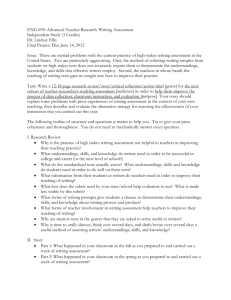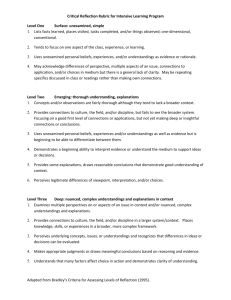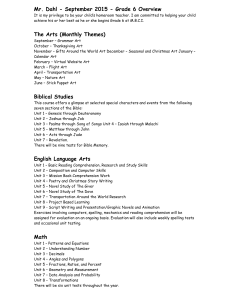Understanding by Design Unit Template
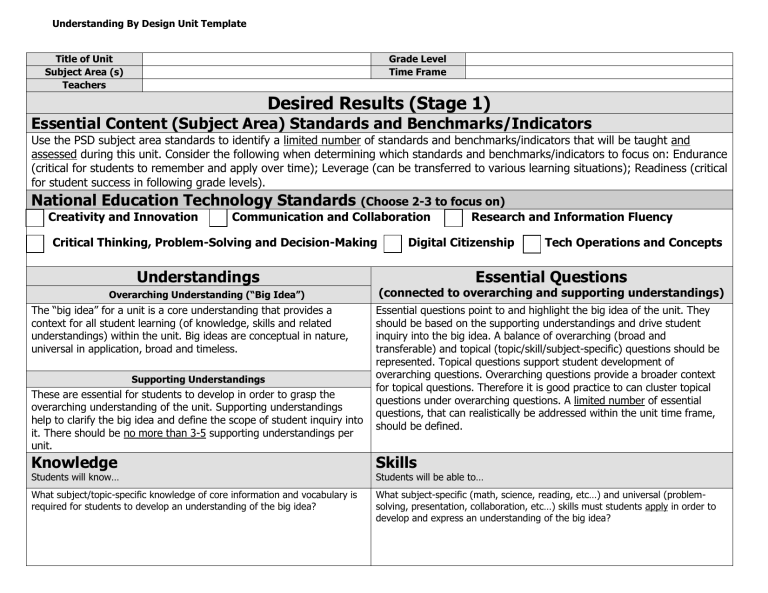
Understanding By Design Unit Template
Title of Unit
Subject Area (s)
Teachers
Grade Level
Time Frame
Desired Results (Stage 1)
Essential Content (Subject Area) Standards and Benchmarks/Indicators
Use the PSD subject area standards to identify a limited number of standards and benchmarks/indicators that will be taught and assessed during this unit. Consider the following when determining which standards and benchmarks/indicators to focus on: Endurance
(critical for students to remember and apply over time); Leverage (can be transferred to various learning situations); Readiness (critical for student success in following grade levels).
National Education Technology Standards
(Choose 2-3 to focus on)
Creativity and Innovation Communication and Collaboration Research and Information Fluency
Critical Thinking, Problem-Solving and Decision-Making Digital Citizenship Tech Operations and Concepts
Understandings
Overarching Understanding (“Big Idea”)
The “big idea” for a unit is a core understanding that provides a context for all student learning (of knowledge, skills and related understandings) within the unit. Big ideas are conceptual in nature, universal in application, broad and timeless.
Supporting Understandings
These are essential for students to develop in order to grasp the overarching understanding of the unit. Supporting understandings help to clarify the big idea and define the scope of student inquiry into it. There should be no more than 3-5 supporting understandings per unit.
Knowledge
Students will know…
What subject/topic-specific knowledge of core information and vocabulary is required for students to develop an understanding of the big idea?
Essential Questions
(connected to overarching and supporting understandings)
Essential questions point to and highlight the big idea of the unit. They should be based on the supporting understandings and drive student inquiry into the big idea. A balance of overarching (broad and transferable) and topical (topic/skill/subject-specific) questions should be represented. Topical questions support student development of overarching questions. Overarching questions provide a broader context for topical questions. Therefore it is good practice to can cluster topical questions under overarching questions. A limited number of essential questions, that can realistically be addressed within the unit time frame, should be defined.
Skills
Students will be able to…
What subject-specific (math, science, reading, etc…) and universal (problemsolving, presentation, collaboration, etc…) skills must students apply in order to develop and express an understanding of the big idea?
Assessment Evidence (Stage 2)
Assessment of Overarching Understanding/Big Idea
This is the unit “summative assessment”. The results of this assessment should be used not only to gauge the level of student understanding but also the overall effectiveness of the unit. If there is no clear way to assess student understanding of the central idea then the quality of the central idea itself should be revisited.
Assessment Criteria (students will be able to… student application of Six Facets of Understanding)
Effective assessment criteria are clear to students, measurable, linked to learning goals and promote active student engagement in learning.
Assessment Tool (describe type of assessment tool to be used here - post completed tool with unit)
Assessment tools are used to gather and interpret data about student learning. Examples: rubrics, continuums, checklists and anecdotal records.
Assessment Strategy (performance task description)
Assessment strategies are ways that students demonstrate their understanding through a performance, presentation, model, finished product, etc.
Goal
Role
Audience
Situation
Product/Performance
Standards
Evidence of development of supporting understandings, knowledge and skills
(identify assessment criteria, strategies and tools for each)
These “formative assessments” can be formal or informal in nature and should be used to gauge student development of understandings, knowledge and skills over the course of the unit. Data from these assessments should be used by teachers to adjust learning experiences and provide differentiated support (“interventions”) that help all students achieve the desired results.
Evidence of student application of selected National Educational Technology Standards during the course of the unit?
(Note: assessment of the NETS standards should be integrated with assessment of unit understandings, knowledge and skills and embedded within unit learning activities)
Learning Experiences (Stage 3)
Consider the questions in the boxes below as you design learning experiences that support student achievement of desired results and exploration of unit essential questions.
Student learning experiences should be clearly linked to unit assessment criteria and to the desired results. A well-designed learning experience provides opportunities to assess student development of the understandings, knowledge and skills that are the focus of the unit. Therefore, unit learning experiences are often developed simultaneously with unit assessments.
A.
Building Background/Connecting to Students’ Current Understandings, Knowledge and Skills
At the beginning of the unit the teacher should design learning experiences that reveal students’ current understandings,
misconceptions, knowledge and skills in relation to the unit. The results should be used to modify planned unit learning
experiences and to demonstrate student growth compared to the end of the unit. It may be necessary to “frontload” information
at the beginning of the unit so students have the necessary background knowledge to explore the essential questions
(and pose their own questions) over the course of the unit.
B. Student Exploration of Essential Questions
Unit learning experiences should be open-ended enough to address various student learning styles and different levels
of understanding, knowledge and skills. Consider also a balance of individual, small group and whole group learning activities.
Use “Where To…” as a tool to assess the quality and scope of unit learning experiences.
Where are your students headed? Where have they been? How will you make sure the students know where they are going?
How will you hook students at the beginning of the unit?
How will you cause students to reflect and rethink?
How will you guide them in rehearsing, revising, and refining their work?
How will you help students to exhibit and selfevaluate their growing skills, knowledge, and understanding throughout the unit?
How will you tailor and otherwise personalize the learning plan to optimize the engagement and effectiveness of ALL students, without compromising the goals of the unit?
What events will help students experience and explore the big idea and questions in the unit?
How will you equip them with needed skills and knowledge?
From: Wiggins, Grant and J. Mc Tighe. (1998).
ISBN # 0-87120-313-8 (ppk)
How will you organize and sequence the learning activities to optimize the engagement and achievement of ALL students?
Understanding by Design , Association for Supervision and Curriculum Development

